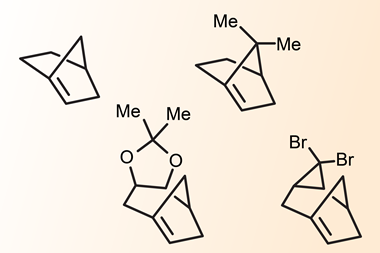Overcoming the challenges of working with highly polar molecules
By this point of the year, a lot of people have broken their New Year’s resolutions. Not me, though. Since I resolved to cut out carbs, my life has never been better. You see, I’ve spent most of my full-time job for the past five years synthesising unnatural sugars, and this year I’m going to try and avoid carbohydrates for a while – at least while I’m in a lab coat.
Carbohydrates, by definition, contain rather a lot of oxygen, primarily in the form of hydroxyl groups. Undergraduate chemists learn early on that as the amount of oxygen (and nitrogen) in a molecule increases, so does its polarity. While non-polar compounds have certain challenges associated with them, these problems generally pale in comparison to those of extremely polar compounds. As polarity ramps up, purification starts to get tricky. Then your compounds stop coming out of water. At the extreme end of the spectrum, molecules start to get unexpectedly ‘sticky’. A colleague of mine recently worked with an intermediate that bound palladium so tightly that catalysis was impossible with less than stoichiometric metal. Even worse, the popular natural product ouabagenin, a hexahydroxy steroid, can famously pull the borate out of borosilicate glass!
Now, I’ll be the first to admit that carbohydrate chemistry isn’t the sexiest. Necessarily, there’s a fair amount of protecting group manipulation – such is the current state of the art of polyol synthesis. However, if you can look past this, there’s a lot of surprising and clever chemistry in the field that often goes under-appreciated. Our subject today, euonyminol, has nine – nine! – hydroxyl groups. It’s also dense: of its 15 carbon atoms there are only four that aren’t connected to an oxygen atom. This intricacy notwithstanding, the first asymmetric synthesis of this target was recently accomplished by Seth Herzon and co-workers at Yale University in the US.1
The route starts with the perennially popular natural product carvone. The molecule’s first all-carbon stereocentre at C11 is quickly established with known chemistry, but for the second at C10, the team gets creative. First, an unusual oxyalkylation of the allyic alcohol is carried out via copper-catalysed [3 + 2]-cycloaddition (note that TBS is a salicylate ligand, not the beloved silicon protecting group). A double oxidation sequence – ozonolysis followed by a Baeyer–Villager reaction – then destroys both the new rings, and thus the team formally achieves hydroxycarboxylation of the original olefin with excellent stereocontrol (figure 1).
After a few more steps, it’s time to construct the final ring. This is done using a simple aldol-dehydration sequence, followed by 1,2-addition of a methyl group to the resulting enone (figure 2). The team then needs to achieve trans-dihydroxylation of the resulting allylic alcohol and, as usual, this means epoxide opening. First, dimethyldioxirane is used to form the epoxide, conveniently as a single diastereomer. Then, nucleophilic demethylation leads to attack by the resulting carboxylate, and the resulting lactone diol is quickly protected as the acetonide. It’s impressive that the team is able to accomplish this sequence without transposition of the glycidol, a rearrangement that would have been a Payne.
From here, there’s just one oxygen atom left to add, but the molecule keeps on fighting, forcing the team into a creative endgame and an interesting ketol rearrangement before finally achieving victory.
References
1 S B Herzon et al, J. Am. Chem. Soc. 2021, 143, 699 (DOI: 10.1021/jacs.0c12998)














No comments yet